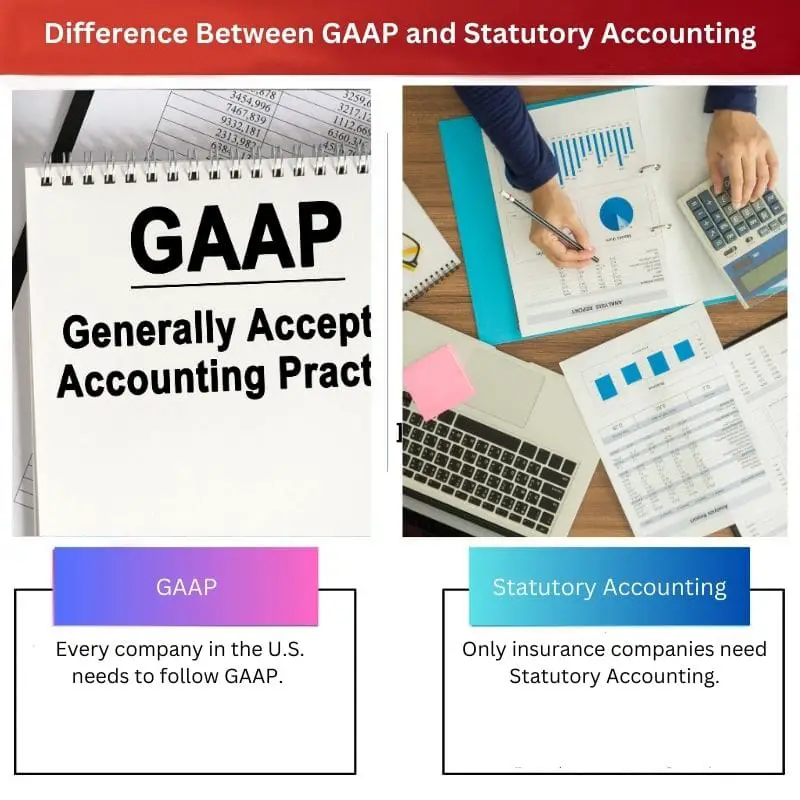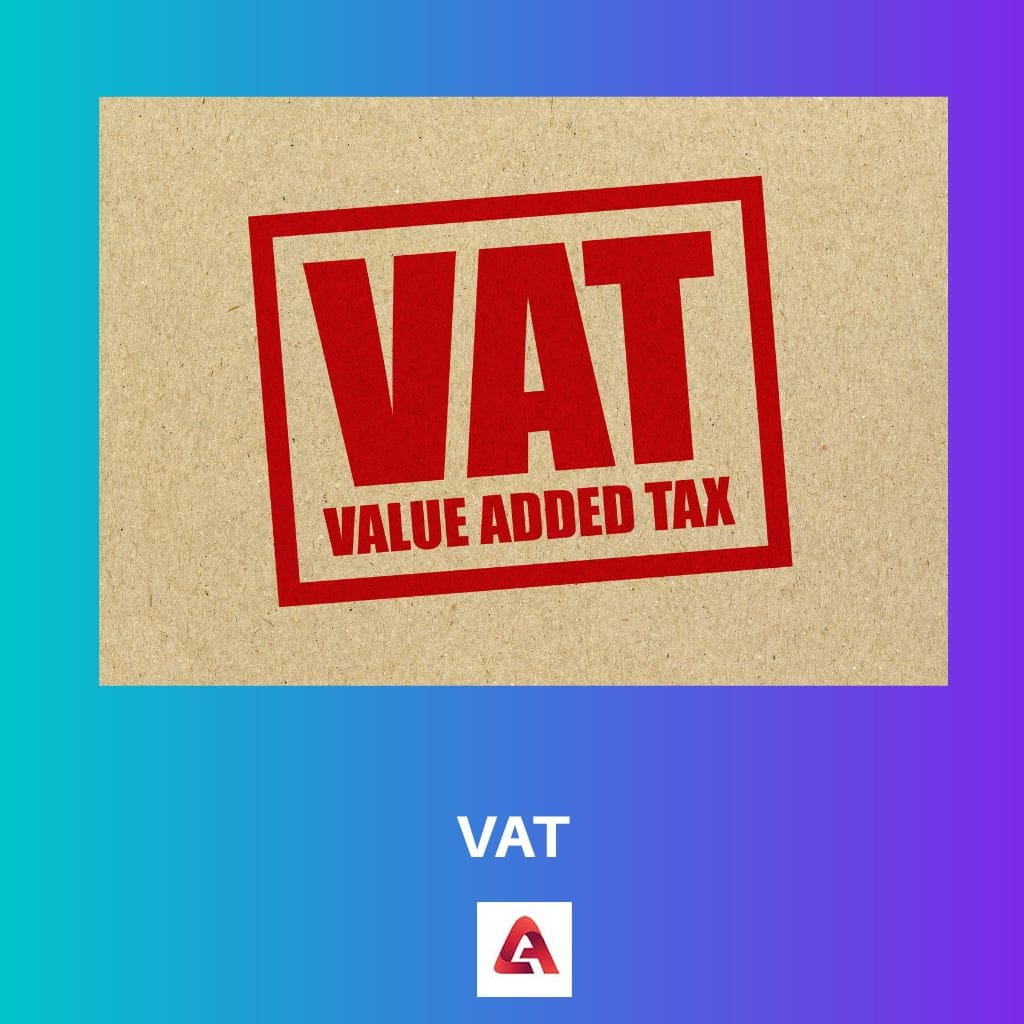Every industry follows some set of principles for preparing financial statements. These sets of principles indicate the way financial transactions need to be conducted following certain rules and regulations of the statutory bodies.
Some of these statutory bodies are GAAP or Generally Accepted Accounting Principles and SAP or Statutory Accounting Principles.
Key Takeaways
- GAAP stands for Generally Accepted Accounting Principles and is a set of accounting rules used in the US, while Statutory Accounting is the accounting method used for insurance companies.
- GAAP is used to present a company’s financial statements to external stakeholders, while Statutory Accounting is used to calculate an insurer’s statutory capital and surplus.
- While GAAP focuses on presenting an accurate picture of a company’s financial performance, Statutory Accounting emphasizes the solvency of an insurance company.
GAAP vs Statutory Accounting
The difference between GAAP and Statutory Accounting Is that GAAP is followed to provide useful insights to investors and shareholders for researching a company’s financial health. On the other hand, Statutory Accounting Principles target insurance companies’ solvency-based accounting methods. Statutory Accounting Principles are designed to enhance the transparency of the liquidity and assets of insurance companies.

GAAP or Generally Accepted Accounting Principles are a set of accounting standards and principles issued by the FASB or Financial Accounting Standards Board.
GAAP is a combination of the commonly accepted ways of reporting and recording information related to accounting and authoritative standards.
GAAP aims to enhance the consistency, comparability, and clarity of financial information communication.
Statutory Accounting Principles or SAP refer to a set of accounting regulations issued by the NAIC or National Association of Insurance Commissioners for preparing the financial statements of an insurance firm.
SAP aims to ensure the insurance firms’ solvency so that they can fulfil the obligations of their policyholders.
Comparison Table
| Parameters of Comparison | GAAP | Statutory Accounting |
|---|---|---|
| Industry differences | Every company in the U.S. needs to follow GAAP. When the companies file their financial reports, they are required by the U.S. Exchange and Security Commissions to follow GAAP. | Only insurance companies need Statutory Accounting. The NAIC or National Association Insurance Commissioners follow the SAP or Statutory Accounting Principle framework for recording the companies’ financial transactions. |
| Purpose | The main purpose of GAAP or Generally Accepted Accounting Principles is to ensure that reporting of the financial statement is consistent and transparent from one company to another. | Insurance companies prepare their financial statements under the guidelines of Statutory Accounting Principles. This financial information allows investors to understand whether insurers are capable of paying insurance claims. |
| Value of Asset | Financial reports prepared under GAAP are assets of the company which increases the overall asset value of the company. | Statements prepared under Statutory Accounting Principles are used to identify a company’s current value. These are supplies, tax credit, goodwill, and so on. |
| Matching Principle | When preparing the financial statements of the companies, GAAP follows the matching principle. | Statutory Accounting Principles do not follow any matching principle. |
| Value of Equity | Under GAAP entity value is recorded as a stockholder. GAAP has relatively less strict rules related to the net income calculation of the companies. | Under the Statutory Accounting Principle entity value is recorded as statutory policyholder surplus. It has strict rules related to the net income calculation of the insurance companies. |
What is GAAP?
GAAP or Generally Accepted Accounting Principles refer to a set of accounting standards and principles issued by the FASB or Financial Accounting Standards Board.
GAAP is a combination of the commonly accepted ways of reporting and recording information related to accounting and authoritative standards.
The main purpose of GAAP or Generally Accepted Accounting Principles is to ensure that reporting of the financial statement is consistent and transparent from one company to another.
GAAP has 10 main principles- Regularity Principle, Sincerity Principle, Consistency Principle, Non-Compensation Principle, Performance of Methods Principle, Continuity Principle, Prudence Principle, Periodicity Principle, Utmost Good Faith Principle, and Materiality Principle.
GAAP makes the process of financial reports transparent. It also standardized definitions, methods, terminology, and assumptions.
Financial statements issued by GAAP can be easily compared by external parties. It allows for efficient and quick cross-company comparisons.
GAAP enables stakeholders and investors to make evidence-based sound decisions as its standards deliver continuity and transparency. The GAAP compliance consistency allows companies to identify strategic business options easily.
Every company in the U.S. needs to follow GAAP. When the companies file their financial reports, they are required by the U.S. Exchange and Security Commissions to follow GAAP.
Most other countries follow IFRS (International Financial Reporting Standards) accounting framework for reporting financial statements. GAAP is more rule-oriented than IFRS.

What is Statutory Accounting?
Statutory Accounting Principles or SAP refer to a set of accounting regulations issued by the NAIC or National Association of Insurance Commissioners for preparing the financial statements of an insurance firm.
Insurance companies prepare their financial statements under the guidelines of Statutory Accounting Principles. This financial information allows investors to understand whether insurers are capable of paying insurance claims.
Financial statements prepared under SAP or Statutory Accounting Principles are submitted to state regulatory bodies for reviewing the solvency of the insurance firms so that they may ensure that all obligations are fulfilled by contract holders and policyholders. State regulators look for sufficient surplus and capital in a firm as required by Statutory Accounting Principles for providing a safety net.
The Statutory Accounting Principle is developed under the GAAP framework, but the Statutory Accounting Principle mainly focuses on maintaining and recording the solvency measures of firms.
NAIC, or the National Association of Insurance Commissioners, developed the Statutory Accounting Principle to adhere to 3 main values- recognition, consistency, and conservatism.
Under Note 20 of 2019 fourth-quarter 10-k financial statements, AIG or American International Group presents “Statutory Financial Data and Restrictions”.
The table in Note 20 shows the actual statutory surplus and capital for the general casualty of the insurer and retirement and life insurance line of business compared to the minimum required statutory surplus and capital.

Main Differences Between GAAP and Statutory Accounting
- The main difference between GAAP and Statutory Accounting Is that GAAP is followed to provide useful insights to investors and shareholders for researching a company’s financial health. On the other hand, Statutory Accounting Principles target insurance companies’ solvency-based accounting methods. Statutory Accounting Principles are designed to enhance the transparency of the liquidity and assets of insurance companies.
- The main purpose of GAAP or Generally Accepted Accounting Principles is to ensure that reporting of the financial statement is consistent and transparent from one company to another. On the other hand, Insurance companies prepare their financial statements under the guidelines of Statutory Accounting Principles. This financial information allows investors to understand whether insurers are capable of paying insurance claims.
- Financial reports prepared under GAAP are assets of the company, which increases the overall asset value of the company. In contrast, Statements prepared under Statutory Accounting Principles are used to identify a company’s current value. These are supplies, tax credits, goodwill, and so on.
- When preparing the financial statements of the companies, GAAP follows the matching principle. On the contrary, Statutory Accounting Principles do not follow any matching principle.
- Under GAAP, entity value is recorded as a stockholder. GAAP has relatively less strict rules related to the net income calculation of the companies. On the other hand, Under the Statutory Accounting Principle entity value is recorded as statutory policyholder surplus. It has strict rules related to the net income calculation of the insurance companies.






